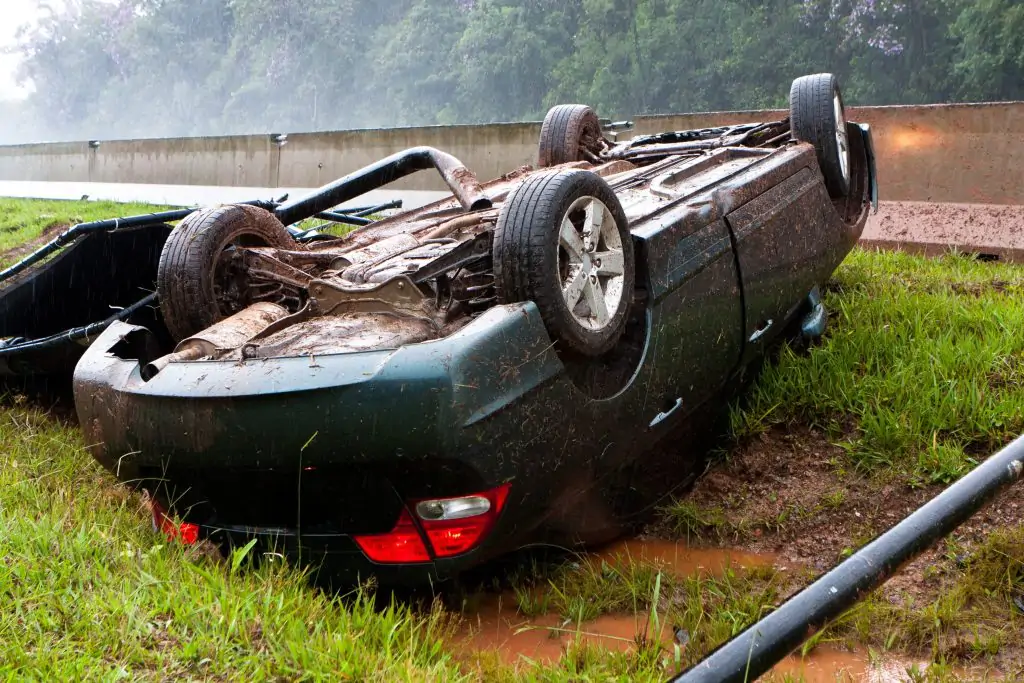Roll-Over Accident Lawyers

Roll-over accident lawyers in New York represent victims who are injured in these types of accidents that are by another another’s negligence. Negligent parties can range from distracted drivers, to unwary pedestrians, and unsafe road conditions due to highway construction.
The roll-over accident attorneys at Sobo & Sobo have over 50 years of experience winning settlements for victims across New York, New Jersey and Chicago, IL. Those interested in seeking compensation can call 855-468-7626 or contact them online to discuss the details of their case with an experienced roll-over injury lawyer.
Common Injuries Covered in Roll-Over Accident Lawsuits
Roll-over accidents can lead to serious and long-lasting injuries depending on the severity of the collision, the types of automobiles involved, and the speed of impact. Some of the most common injuries sustained from roll-over accidents include:
- Spinal Damage: herniated disks, paralysis, nerve damage, and spinal compression are common injuries from roll overs, which can lead to paralysis, paraplegia, and quadriplegia in severe circumstances
- Skull & Traumatic Brain Injuries (TBIs): skull fractures and severe concussions typically result from the driver being thrown violently against areas of a car’s interior during a roll-over accident, which can cause severe brain injuries and chronic nerve damage
- Broken Bones: because a roll-over accident often leaves the driver vulnerable and unable to react, crushed, broken and fractured bones are common—especially in the legs, arms and ribcage
- Internal Injuries: during a roll-over collision, debris and objects in the car can bruise, lacerate and puncture internal organs
Who is at Fault in a Roll-Over Accident?
Determining fault in roll-over collisions requires a thorough investigative protocol no matter what the situation. A roll-over can be a single-car type of accident, where only the driver is found to be responsible for the accident—sometimes due to circumstances outside of their control. However, depending on the situation, another party may be found guilty of causing the accident.
Examples of Driver Negligence in Roll-over Accidents:
Depending on the specific case, a court may find drivers negligent (both the injured victim and/or another driver involved in the accident) who displayed the following behaviors, and therefore at least partially responsible in causing a roll-over accident:
- Speed: Speeding is the number-one cause of roll-over accidents, according to data from the NHTSA. High speeds increase the risk of rollover while turning around sharp bends, and when a driver needs to swerve to avoid collision. This also influences the action of overcorrecting.
- Distraction: Many rollovers are the result of the driver overcorrecting after not paying enough attention to the road. Cell phone use, operating the radio, or conversation with a passenger are examples of distractions that often lead to dangerous rollover accidents.
- Impairment: Alcohol is involved in nearly half of all rollover crashes. Any amount of alcohol above a 0.00% blood alcohol concentration (BAC) may affect a driver’s muscular coordination, vision and judgment.
Roll-Overs Caused by Factors Outside the Driver’s Control:
Roll-over accidents that are caused by the following factors typically result in the injured victim being proved innocent in court, and receiving maximum compensation:
- Poor Road Conditions: Roads with improperly maintained surfaces increase the risk of rollovers. Uneven pavement, potholes and other neglect will increase the chances of a vehicle rolling over. In these cases, it’s possible to make a claim against any state or government entity responsible for maintaining safe roadways. The likelihood of a rollover increases during inclement weather as factors such as ice, snow and rain reduce a vehicle’s stability.
- Roadway “Trips:” NHTSA data reveals that more than 95% of rollovers are tripped, meaning the vehicle leaves the roadway and slides sideways before coming into contact with something in the environment. This causes the vehicle to become airborne and roll over. Common “trips” in the roadway include guardrails, curbs, medians, steep slopes, and soft soil.
- Defective Car Parts: If a rollover is related to a defective car part, the driver may have a claim against the automobile manufacturing company. A valid product liability claim must prove that the defect occurred during the design, manufacturing or handling of the product. A claim may also prove a lack of warning about the defective part to the consumer.
- Overcorrecting: Overcorrecting is a natural reaction when a driver encounters a soft surface (ex: soil or snow) and attempts to steer out of a slide and/or hit the brakes. This can result in the vehicle losing balance and rolling over.
Contact a Roll-Over Accident Lawyer
Sobo & Sobo are particularly experienced in the area of auto accidents, including roll over accidents across NY, NJ and Chicago, IL. With decades of experience under their belts defending victims of roll-over accidents, they are ready and able to help those seeking compensation file a lawsuit and win a settlement they deserve. Contact Sobo and Sobo online or call today at 855-468-7626 for a free consultation.
National Roll-Over Accident Statistics
According to data from the National Highway Traffic Safety Administration (NHTSA):
- Rollovers only count for only about 2% of all motor vehicle crashes—yet result in nearly 35% of all car accident fatalities.
- Nearly 85% of all rollovers are single-vehicle accidents. This suggests that individual driver behavior plays the most significant role in the cause of most rollover accidents.
- Over 90% of rollovers occur during routine driving operations: driving straight or around a curve. This further suggests that driver behavior (speeding, impairment and attentiveness) plays a large part in the cause of these accidents.
- 40% of all rollovers are the result of speeding. Nearly 75% of rollovers occur in rural areas with speed limits 55 miles per hour or higher.




